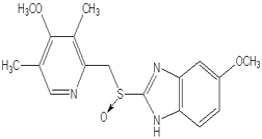After gathering all possible information about the lead compound, researchers must now understand how to manufacture a drug product. This applies not only to the lead compound but also to other chemicals that favour its disolution in the gastrointestinal (GI) tract, help in the manufacturing process or protect it from degradation.
In addition to all these subtances, a wide array of products are added. In tablets, for example, cellulose is often included to improve the drug disintegration in the digestive fluids. Talc is also included in low concentrations during the manufacturing to absorb liquid and semi-liquid subtances. Lactose, or milk sugar, is often aggregated to bulk the tablet, acquiring a convenient size so that the patient can hold and swallow it.
Some tablets contain functional polymers to develop certain drug attributes. One of the main uses of functional polymers is to protect the tablet from the high acidity in the stomach, thus ensuring that the drug is dissolved in the small intestine later, and in this way improving its absortion in the intestinal fluids.
Some tablets contain functional polymers to develop certain drug attributes. One of the main uses of functional polymers is to protect the tablet from the high acidity in the stomach, thus ensuring that the drug is dissolved in the small intestine later, and in this way improving its absortion in the intestinal fluids.
Even though a drug can be administered in many different ways, I will focus on those drugs that are administered orally to focus on the following questions:
Will the drug be dissolved and absorbed?, depending on how much it is absorbed, what should the dose be?, is it metabolised by the liver quickly after its absortion?, will it be degraded by the acidic media in the stomach?
With regard to the last question many drugs can be degraded at low pH. An example of these kinds of drugs is omeprazole, which without a functional polymer would not be effective. The purpose of this polymer is to preserve the omeprazole granules from direct contact with the gastrointestinal fluid until the pH becomes less acid and the drug is no longer in danger of being degraded. For this reason, it is important to remember that tablets and pills must not be broken, unless the pharmacist indicates it, or the polymer coating would be damaged and the drug would not be effective.
Will the drug be dissolved and absorbed?, depending on how much it is absorbed, what should the dose be?, is it metabolised by the liver quickly after its absortion?, will it be degraded by the acidic media in the stomach?
With regard to the last question many drugs can be degraded at low pH. An example of these kinds of drugs is omeprazole, which without a functional polymer would not be effective. The purpose of this polymer is to preserve the omeprazole granules from direct contact with the gastrointestinal fluid until the pH becomes less acid and the drug is no longer in danger of being degraded. For this reason, it is important to remember that tablets and pills must not be broken, unless the pharmacist indicates it, or the polymer coating would be damaged and the drug would not be effective.
Undoubtedly, the most usual way of delivering drugs to the body is orally because pills, capsules and tablets are easy to administer, mass-produced, have good stability and are easily absorbed by the digestive system.
But there are other systems that, at times, are better alternatives to the oral medication. Thus, intravenous or IV administration is performed when a high or well-controlled dose is required. This is the case with highly toxic agents (chemotherapy). However, this system has as a main disadvantage that is an invasive technique and it requires a clinician as well as sterile material to be dispensed.
Topical administration is another delivery system, for example ointments and creams to relieve irritations, rashes or insect bites as well as transdermal patches and gels which can permeate the skin so that the drug reaches the bloodstream.
A fourth type are inhaled medications, which like the former, perform locally, helping to treat illnesses like asthma, allergies or chronic lung diseases.Taking advantage of the fact that lungs are covered with a vast amount of vessels and capillaries, lots of drugs are inhaled (whether they are specific for the treatment of lung diseases or not) with the goal of being rapidly taken up by the circulatory system. As an example we can mention loxapine; an antipsychotic used in the treatment of schizophrenia, which when it is inhaled its effects can be detected in just ten minutes.
But there are other systems that, at times, are better alternatives to the oral medication. Thus, intravenous or IV administration is performed when a high or well-controlled dose is required. This is the case with highly toxic agents (chemotherapy). However, this system has as a main disadvantage that is an invasive technique and it requires a clinician as well as sterile material to be dispensed.
Topical administration is another delivery system, for example ointments and creams to relieve irritations, rashes or insect bites as well as transdermal patches and gels which can permeate the skin so that the drug reaches the bloodstream.
Therefore, the election of the suitable route of drug administration can make easier the drug uptake or even avoid possible side effects.
Sources: UTAustinX: UT.4.01x Take Your Medicine - The Impact of Drug Development.
http://generalidadesdelafarmacia.blogspot.com.es/2010/11/vias-de-administracion-de-medicamentos.html
http://www.xatakaciencia.com/medicina/farmacologia-vias-de-administracion-de-los-farmacos-y-sus-pros-contras
http://www.riesgoquimico.es/2009/03/30/omeprazol/
http://generalidadesdelafarmacia.blogspot.com.es/2010/11/vias-de-administracion-de-medicamentos.html
http://www.xatakaciencia.com/medicina/farmacologia-vias-de-administracion-de-los-farmacos-y-sus-pros-contras
http://www.riesgoquimico.es/2009/03/30/omeprazol/








Your opinion matters